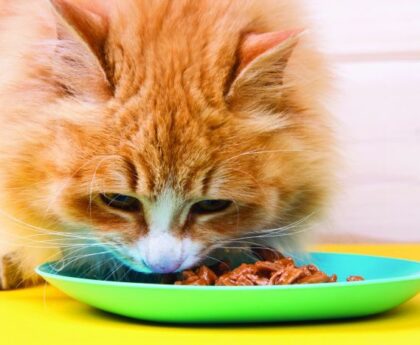
An upward price surge has threatened the steady expansion in pet food sales that Eastern European markets had experienced over the previous decade.
Szymon Mordasiewicz, commercial director of GfK Polonia Households Panel estimated in 2022 that sales of cat and dog food sales in Poland experienced a volumetric decrease by one percent, even though most pet parents polled over time had indicated they would only cut budgets if left with no choice.
Recent marketing research by UCE Research’s Retail Price Index showed pet food sales dynamics had changed drastically over the course of 2022 in Poland due to a 25.9% price increase for pet food – with sales volumes and revenues both experiencing dramatic changes as a result. Mordasiewicz reported value sales had exceeded the PLN 3 billion mark (US$724 Million), setting an all-time sales high.
Kamil Korwin, managing director of online pet store hubun.pl, noted that Poland’s pet food market has experienced conflicting forces: On one hand, humanization trends continue to lead more Poles towards feeding their pets better; while on the other, inflation forces more pet parents towards purchasing cheaper options even if it means lower quality foods.
However, not all Eastern European markets experienced a decrease in pet food sales. Heureka, Czech Republic’s premier shopping website estimated that overall market sales grew slightly compared to 2022 while online sales experienced between 5- 20% growth depending on category.
Still, according to the company, inflation’s effects can be seen clearly; animal accessories sales showed a 32% decline while training equipment saw close to 20% fewer purchases last year.
Due to rising costs, owning a dog in Latvia has become an expensive luxury, according to local news outlet Delfi. No accurate figures on pet food sales in Latvia exist yet but owners of pet shops confirm trends seen elsewhere: customers preferring cheaper products while forgoing treats and accessories altogether.
Pet owners in Eastern Europe may be more vulnerable to changes in behavior as a result of lower monthly wages compared with their Western European counterparts, due to PLN 6,510 (US$1,570) as the median monthly wage in 2023; Czech Republic and Latvia offer even lower figures such as CZK 38,322 (US$1,748) and Eur 1,400 (US$1,530), respectively. Within non-EU countries like Russia the average monthly wages amount to an astonishing Rub 57,391 (US$762) while Belarus’ average monthly wages average at BRR1814 (US$721).
High inflation has taken its toll on pet food sales in Russia and Belarus. Sales dropped 19-26% year-on-year during January-February 2023 in Russia due to various factors, including supply disruptions of imported pet food that further contributed to an upward price spiral, reported Kommersant newspaper.
Tatyana Kolchanova, general director of the Russian Union of Zoo Business, attributes negative dynamics to an elevated base effect and expressed hope that with increased imports from alternate regions such as China, Turkey and India, market stability would improve.
Belarus differs slightly, thanks to Decree 713 and its price caps for some items sold retail, such as pet food. A survey conducted by an independent news outlet showed this action drove closure of independent pet shops across Belarus as well as decreased variety on the market; for instance, one pet shop owner estimated this decision cost them between 15%-20% of revenue.
“After talking with other pet food stores, it has become apparent that everyone is in survival mode; nobody is making plans,” reported an owner of a pet food shop to a publication.
Belarussian customers are opting for cheaper pet food despite price regulation. Unfortunately, no reliable data exists on sales in Belarussian market but local market players surveyed by publication said physical sales remain similar to 2022 levels.




